| book recommendations
    
This is sort of a Ben Shahn festival. I don't hear much about Shahn now but he is someone whose work speaks to me and has for along time. I first ran across Ben Shahn in the early 1960s as a young Architecture student. I found The Shape of Content. This is the first book about art that I bought. I still have it and I reread it every few years. Ben Shahn: An Artist's Life is a biography, Common Man, Mythic Vision is about his paintings, and Ben Shahn's New York: The Photography of Modern Times is about his photography. I've had these books ready to post for some time but there was one that I had been looking for that I only found a couple of days ago: Ounce, Dice, Trice, which is out of print. I finally found some boxes of books that I hadn't noticed and it was in the last box that I found it! While his paintings and photographs are great, it's his drawings that I never tire of looking at. Since the book is out of print I've scanned it.
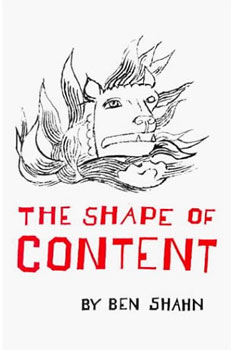
The Shape of Content
(The Charles Eliot Norton Lectures)
by Ben Shahn
This book came out in the early 1960s and is still in print. It still makes sense.
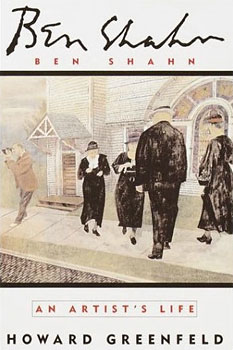
Ben Shahn: An Artist's Life
by Howard Greenfeld
From Amazon:
|
There was a time when nearly everyone recognized Ben Shahn's scathing pictures from his most famous series, The Passion of Sacco and Vanzetti, 1932. Sacco and Vanzetti, two working-class anarchists convicted on trumped-up murder charges, lie dead in their coffins. Behind them stand the top-hatted men of the old, Anglo establishment, hypocritically mourning the poor immigrants whose lives they destroyed.
These days, it may be hard to understand how vital such storytelling artists were to the political life of their times. In Ben Shahn: An Artist's Life, Howard Greenfeld does justice to those heady days, placing both Shahn and his work in the context of the Great Depression, the rise of unions and social relief programs, and the beginnings of the civil rights movement. With uncommon fairness, Greenfeld also chronicles the difficult, contradictory personal life of this brilliant artist, who, for example, began and ended his career working on Jewish themes but cruelly abandoned his first wife, Tillie, and their two children to marry a Christian woman.
Greenfeld adeptly traces Shahn's development as one of the 20th century's most important illustrators and narrative artists, comparable to Daumier and even to Goya.
| |
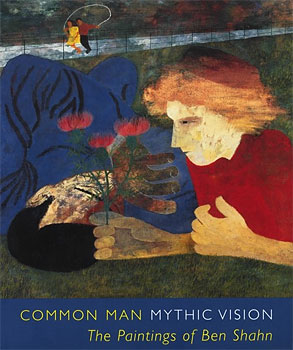
Common Man, Mythic Vision
by Susan Chevlowe
From amazon:
|
With Social Realism out of favor with many critics, the artistic reputation of American artist Ben Shahn (1898-1968) has been in decline since his death. The recent interest in Shahn's life and work evidenced in the exhibition of his later pieces at the Jewish Museum in New York City and the recent biography by Howard Greenfeld (Ben Shahn: An Artist's Life, LJ 10/1/98) is refreshing. The four essays included in this catalog cover his life, his work on various New Deal art project murals, the relationship of his work to postwar American art, and the allegorical content of his disarmingly realist work. The color plates illustrating works in the exhibition are beautifully reproduced and provide a good introduction to Shahn's work and an excellent visual accompaniment to the Greenfeld biography.
| |
Common Man, Mythic Vision: The Paintings of Ben Shahn
|
The Jewish Museum will present Common Man, Mythic Vision: The Paintings of Ben Shahn from November 8, 1998 to March 7, 1999. Commemorating the centennial year of this acclaimed American artist, the exhibition will feature 52 of the finest paintings created by Ben Shahn between 1936 and 1965. Tracing the development of the artist's career and focusing primarily on his mature style as it evolved following the trauma of World War II and its aftermath, Common Man, Mythic Vision is the first major museum exhibition in the U.S. since 1976, when The Jewish Museum presented a retrospective, Ben Shahn: 1898-1969. Works on view are being loaned from major museums and private collections in the United States, Japan, Sweden and The Vatican. A sampling of Shahn's photographs, advertisements, printed books, masks, and magazine articles is also included, along with a five-minute video of excerpts from two 1960s television interviews with the artist.
| |
[more]
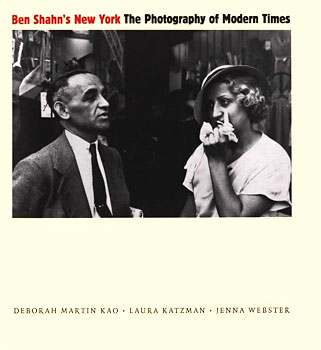
Ben Shahn's New York:
The Photography of Modern Times
by Deborah Martin Kao, Laura Katzman, Jenna Webster
It wasn't until a few years ago that I found out that Shahn was also a photographer. He was one of the original photographers with Roy Stryker and the Farm Security Administration. This book mentions his FSA work but is primarily focused on his work in New York prior to that. He was a friend of Walker Evans and share a studio with him. I didn't know about these pictures until I read this book. Some amazing stuff.
|
With a desire to promote social justice and a deep compassion for humanity, Shahn (1898-1969) was actively involved in social protests and leftist causes in New York City during the 1930s. Although better known for his paintings, murals, and satirical drawings, Shahn was also a talented photographer, influenced by filmmaking and documentary photography as well as his social concerns. Camera skills learned from close friend Walker Evans enabled Shahn to create candid images--of laborers, immigrants, children, the neighborhoods and storefronts of Manhattan, poverty, and unemployment--that became a potent sociopolitical statement during the Depression years. Over the next year the show will be traveling from the organizing institution, Harvard University Art Museums, to major venues in Washington, New York, and Chicago. The authors, who organized the exhibition, have written illuminating essays demonstrating meticulous scholarship. More than 200 duotones, many that Shahn integrated into his paintings, are brilliantly paired in this publication; an appendix with delightful memorabilia caps the work. A gem for both photography and fine arts collections.
| |
It was Ben Shahn and these pictures that was one of the inpirations for my Zorki Standard project. Ben used an early Leica Ia from 1927.
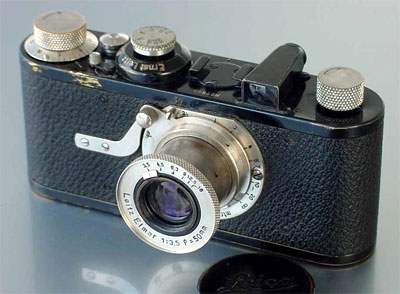
(There are a bunch for sale here if you would like to get me one.)
Not only that, but he used a right angle finder, that Leitz called a WINKO, which had him appear to be looking in another direction..
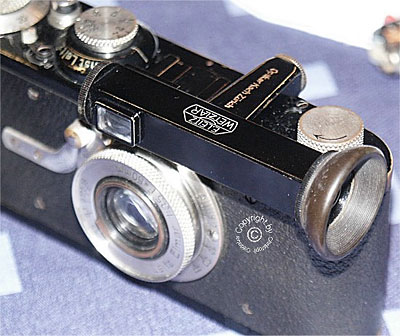
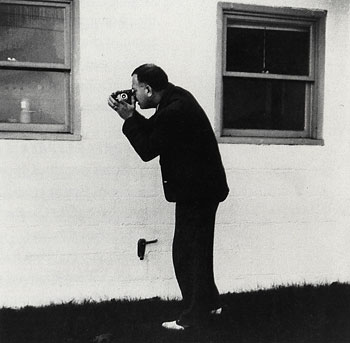
Using a camera like the Leica Ia is a different experience from using more modern equipment. Part of making the Zorki Standard was to feel what that experience was like. Now I need a WINKO!
Shahn's photographs often ended up in his paintings. He started using the camera as a sketch pad for his paintings but the photographs were also an end in themselves.
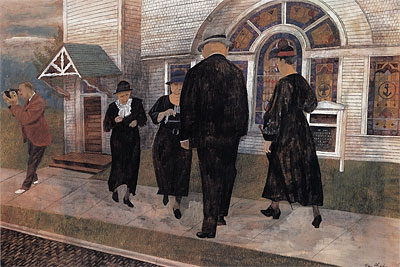
Leica I (A)
The Most Important 35 of All Time:
the Leica A of 1925-1936
Ben Shahn's New York: The Photography of Modern Times
|
Ben Shahn's New York: The Photography of Modern Times
Including over 150 photographs, ink drawings, easel paintings, mural studies, and relevant ephemera, this landmark exhibition focuses on Shahn's personal use of photography as a primary research tool for subsequent works in diverse media and offers a unique perspective for examining other aspects of Shahn's oeuvre. Ben Shahn 's New York will give visitors the opportunity to view an important and little-examined body of Shahn's work, which was formative for the artist's photographic aesthetic and his working process.
| |
[more]
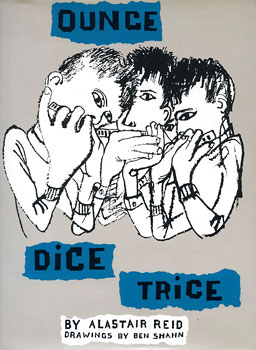
Ounce, Dice, Trice
by Alastair Reid
drawings by Ben Shahn
This a match made in heaven (if only I believed in heaven). The whimsical words of Alastair Ried and the drawings of Ben Shahn. I think it was Blaine that gave this book to me. (I could be wrong. Blaine will set me right.) A wonderful book. It's out of print but it's worth tracking down a used copy. Until then, I've scanned it and you can enjoy it now: Ounce, Dice, Trice.
C O T T O N P I C K E R S
Photographer: Ben Shahn
Pulaski County, Arkansas, October 1935
Resettlement Administration, Lot 1657
|
Ben Shahn made two important contributions to the newly formed Historical Section in 1935. First, of course, were the photographs he himself added to the agency's file. The portion dating from 1935 is small--less than 2 percent of the eight-year accumulation--but about one-third of those early images are Shahn's. And second, his counsel, along with that of several colleagues at the Resettlement Administration, helped Roy Stryker clarify his mission.1 Shahn's sophistication as a painter and printmaker and his keenly felt moral sensibility influenced the running dialogue he had with Stryker. Once, Shahn recalled in 1964, he had explained to Stryker that a certain photograph of soil erosion would not have a strong impact on viewers. "Look Roy," Shahn said, "you're not going to move anybody with this eroded soil--but the effect this eroded soil has on a kid who looks starved, this is going to move people."
| |
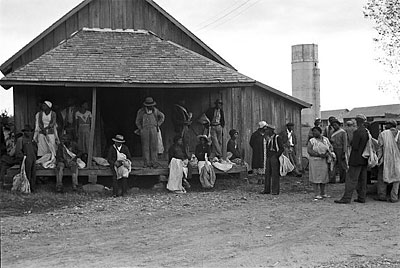
[more]
Ben Shahn
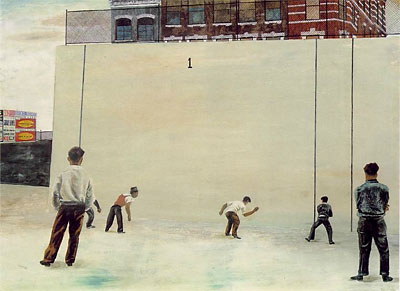
[more]
Ben Shahn
[Lithuanian-born American Social Realist Painter and Photographer, 1898-1969]
Ben Shahn at Harvard
|

